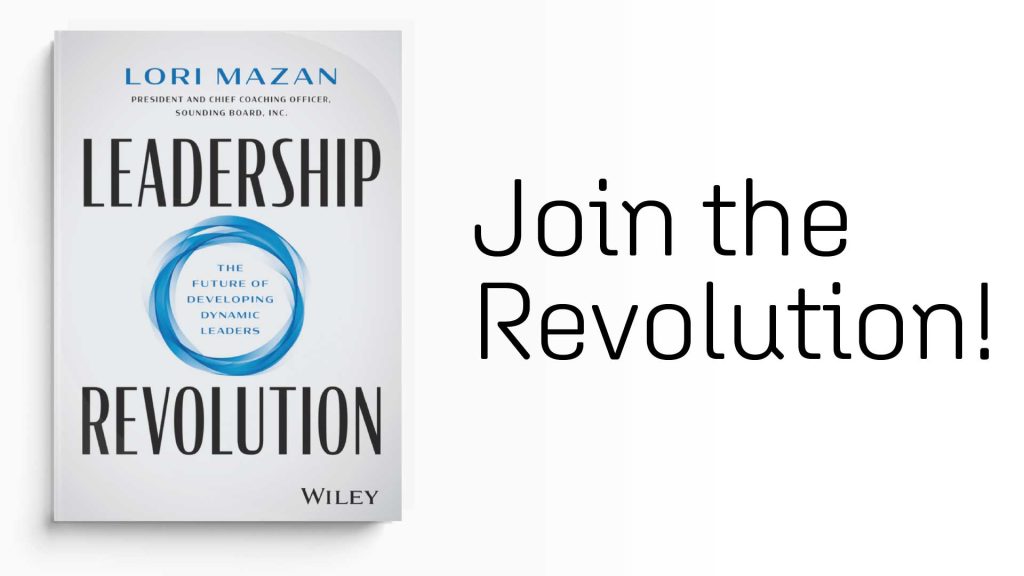This is the second article in a five-part series focused on how to use leadership development to advance DEI initiatives. Read the first installment here.
Women represent the majority of the college-educated workforce — earning both bachelor’s and post-graduate degrees at higher rates than others. Yet, women remain largely absent from board rooms and positions of leadership in corporate America.
Consider, for every 100 women who earn a degree, only 74 men complete their post-secondary education. Conversely, only 82 women are promoted from entry-level positions to management for every 100 men — creating a ‘broken rung, according to McKinsey & Company’s 2022 Women in the Workplace report.
Companies can no longer argue that not enough qualified women candidates exist for leadership roles. If the goal is change, businesses need to recognize and address the systemic issues, mindsets, and behaviors that prevent gender parity within their leadership ranks.
Companies truly devoted to increasing diversity, equity, and inclusion within their leadership bench will need to abandon traditional thinking on DEI and leadership development. Women in leadership development programs from the past are deeply flawed. They either focus too narrowly on a small subset within the company or exclusively on women themselves, or they are too generalized and lack accountability. Instead, companies need to implement leadership development programs that address the underlying factors impeding their DEI initiatives.
Expand the focus beyond women-only programs
Too often, traditional DEI programs attempt to address the gender gap by improving women’s skills to make them more suitable for leadership roles. Yet, these programs aim to build skills that are based on dated, patriarchal leadership models. They attempt to ‘fix’ women under the false assumption that they do not already possess the necessary leadership capabilities.
Yet, research has shown that women are more likely than men to have essential leadership capabilities like emotional intelligence, self-awareness, empathy, and self-control. Structuring leadership development programs exclusively on groups of women isn’t necessary or helpful. It places the onus on women, while ignoring the true causes of the ‘broken rung.’
Businesses must develop capabilities in their existing leaders, those who hold real, transformative power to make meaningful organizational change. When leaders shift their mindsets to ones that actively seek diversity of thought, promote inclusion, and identify formal and informal methods to support all candidates’ growth and development equally and equitably, businesses are more likely to move the needle on DEI initiatives.
For instance, according to a 2022 Harvard Business Review article, women managers who have a sponsor — a champion from a higher level of the organization — are 19% more likely to move up the next rung of the corporate ladder. Women with senior sponsorship have more opportunities to demonstrate their leadership potential. Senior sponsors “can create and alert women to opportunities and encourage them to take risks,” Alexis Krivkovich and Marie-Claude Nadeau state in their essay “The link between sponsorship and risk-taking for women in financial services.”
Coaching can help existing leaders develop the capabilities and mindsets needed to recognize their own unconscious biases, allowing them to develop greater self-awareness, empathy, and emotional intelligence. Not only will this result in greater leadership efficacy overall, it will increase the likelihood that leaders will sponsor others, including women and other individuals from traditionally underrepresented groups.
Develop leaders at all levels
If programs bypass the women-only approach, they may stumble anyway by only providing access to leadership development for those at the highest levels of the organization. While these leaders have considerable influence over the culture of the company, inclusion from lower management levels can help to determine and accelerate women’s career trajectories.
Recall the earlier statistic illustrating that women are less likely to be promoted from entry-level positions into management. The aforementioned McKinsey and Company study also found that only 44% of women report that their manager has taken an interest in their career. Early promotions are extremely critical for women. A 2022 study from LinkedIn found that “women’s chances for advancement start to plummet beyond the first 10-year window of their career.”
To address the broken rung and ensure women are represented in the leadership pipeline, organizations must target career growth and promotion decision-makers at all levels, including middle management. If only the C-suite has access to leadership development, DEI efforts fail on two fronts: development opportunities are not given to women because they are already absent in the boardroom, and those responsible for promoting individual contributors retain the same unconscious biases that uphold the status quo.
Move away from one-and-done, generalized development sessions
Traditional DEI programs often offer mandatory workshops. While initial feedback from these programs is often positive, the results or impact of the information shared rarely lasts more than a week afterwards. According to IBM’s 2021 Women, leadership, and missed opportunities report, these programs create superficial learning — employees learn how to answer assessment questions correctly, but they do not retain the knowledge, nor do they apply it on a daily basis. The report suggests that “experiential and voluntary programs” are far more effective to promote long-term development and create lasting cultural impact.
These programs are also limited in their approach. They frequently lack persuasive arguments on how DEI impacts an organization’s growth potential. “Companies need to rethink equity in the workplace,” said Iyad Uakoub, director of behavioral science at Sounding Board. “They need to think of it in terms of how diversity of thought improves organizational success — not just in terms of a social justice issue.”
Leadership development — specifically coaching — enables the experiential learning IBM’s report advocates, while also developing leaders within the context of their organization. Coaching can help build leaders’ capacity for inviting diverse perspectives and applying an equity lens to the people, challenges, and opportunities specific to their organization. “Companies need to contextualize leadership development to their organization, just as they already do with the definition of leadership,” said Lauren Hutto, director of coaching excellence at Sounding Board.
Create accountability in your DEI initiatives through leadership development
Acknowledging limiting, inequitable, or systemic issues, behaviors, and mindsets is not enough to fix the broken rung for women. Just as with any other business priority, leaders must be held accountable if they fail to deliver on DEI initiatives, gender-based or otherwise.
To do so organizations must be able to quantify DEI efforts. That means setting clear goals. Collect and regularly share data on diversity metrics including hiring, retention, and promotion rates, discrimination complaints, etc. Goal progression, program engagement and participation, and outcomes must be measured. The aforementioned IBM report identified programs that use “design thinking” and “continual test-and-learn cycles” as those among the most effective to bring about lasting improvements to DEI programs.
Leadership coaching provides the exploratory space for leaders to test and learn theories along their developmental journey. Further, leaders should be consistently encouraged to stretch their capabilities, and develop leadership styles through experimentation. Similarly, development programs that incorporate technology can provide transparency via access to key metrics that can determine business impact.
Companies must leave traditional DEI training behind. Instead, opt for leadership development programs focused on the developing capabilities, behaviors, and mindsets needed to create inclusive, diverse organizational cultures. By focusing on developing their existing leadership bench, expanding access to leadership development to all levels of management, and creating accountability, companies can move from virtue signaling to real action on DEI.
Mary Carder is a content writer for Sounding Board.












